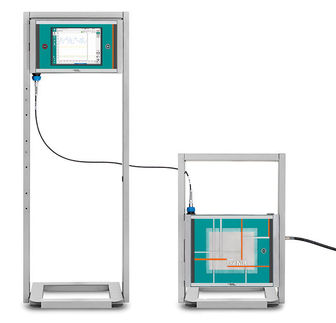To use all functions of this page, please activate cookies in your browser.
my.bionity.com
With an accout for my.bionity.com you can always see everything at a glance – and you can configure your own website and individual newsletter.
- My watch list
- My saved searches
- My saved topics
- My newsletter
Trimeresurus gramineus
Trimeresurus gramineus is a venomous pitviper species found only in southern India. No subspecies are currently recognized.[5] Product highlight
DescriptionRostral scale as deep as broad or broader than deep; upper head-scales small, smooth, imbricate; supraocular scale narrow, rarely broken up; internasals in contact or separated by one or two scales; 8 to 13 scales on a line between the supraoculars; usually one or two, rarely three, series of scales between the suboculars and the labials ; 9 to 12 upper labials, second usually forming the anterior border of the loreal pit, third largest; temporal scales smooth. Scales more or less distinctly keeled, in 21 (rarely 19 or 23) rows. Ventrals 145-175; anal scale entire; subcaudals 53-76. Upper parts usually bright green, rarely yellowish, greyish, or purplish brown, with or without black, brown, or reddish spots ; usually a light, white, yellow, or red streak along the outer row of scales ; end of tail frequently yellow or red; lower parts green, yellow, or whitish.[6] Grows to a length of 2.5 feet; tail 6-5 inches.[6] Common namesBamboo pit viper,[2][3] Indian tree viper,[4] bamboo snake, Indian green tree viper, green tree viper,[7] bamboo viper,[8] bamboo pitviper.[9] Geographic rangeThe range of this species has been restricted to southern India. According to Russell (1796), the type locality is "Vizagapatam, India."[1] See also
References
Further reading
|
|||||||||||||||||||||||||||||
| This article is licensed under the GNU Free Documentation License. It uses material from the Wikipedia article "Trimeresurus_gramineus". A list of authors is available in Wikipedia. |
- QIAGEN collaborates with McGill University to advance microbiome research
- Trimeresurus_mangshanensis
- Horizon Discovery Announces Strategic Partnership with Promega to Develop Next-Generation Predictive Human Disease Models
- Catalyst to make renewable paints, coatings, and diapers discovered - Groundbreaking discovery will enable the manufacturing of biorenewable materials from trees and corn: A Startup wants to make it possible
- Your body recycling itself - Discovery shows how cells decide what to recycle, unlocking debilitating disease’s secret







